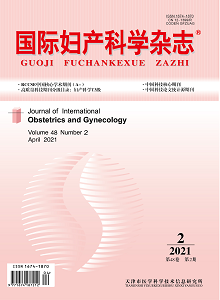Objective: To investigate the sexual function in women with polycystic ovary syndrome (PCOS) and to explore their risk factors for sexual dysfunction. Methods: This cross-sectional study was performed with women with PCOS, who referred to Department of Gynecological Endocrinology, Beijing Obstetrics and Gynecology Hospital from January 2019 to December 2019. The Chinese version of FSFI (Female Sexual Function Index) was used to evaluate the sexual functions, with additional questions which may have relationship to sexual life were determined including age, height, weight, waist and hip circumference, clinical manifestations of hyperandrogenism, educational background, occupation, income level, contraception, desire for pregnancy, life and work stress and aerobic exercise. Results: A total of 946 PCOS women participated in the study and 712(75.26%) women were included in the analyses after screening. The mean total FSFI score was 24.19±2.87. According to FSFI definitions (cut-off score 26.55), 79.49% of women were at risk of FSD. Based on domain scores, according to an arbitrary score of 33% of the maximum score in each domain, 9.41%, 5.34%, 2.67%, 2.39%, 1.69% and 0.42% of women were considered at high risk of dysfunction for lubrication, orgasm, desire, pain, arousal, and satisfaction respectively. Desire for pregnancy, contraception, BMI, clinical manifestation of hyperandrogenism, and age were significantly associated with FSD in PCOS women by multiple linear regression analysis. Conclusions: PCOS patients are at high risks for FSD. Clinicians should pay attention to and manage these risk factors of FSD for PCOS women for long-term.

